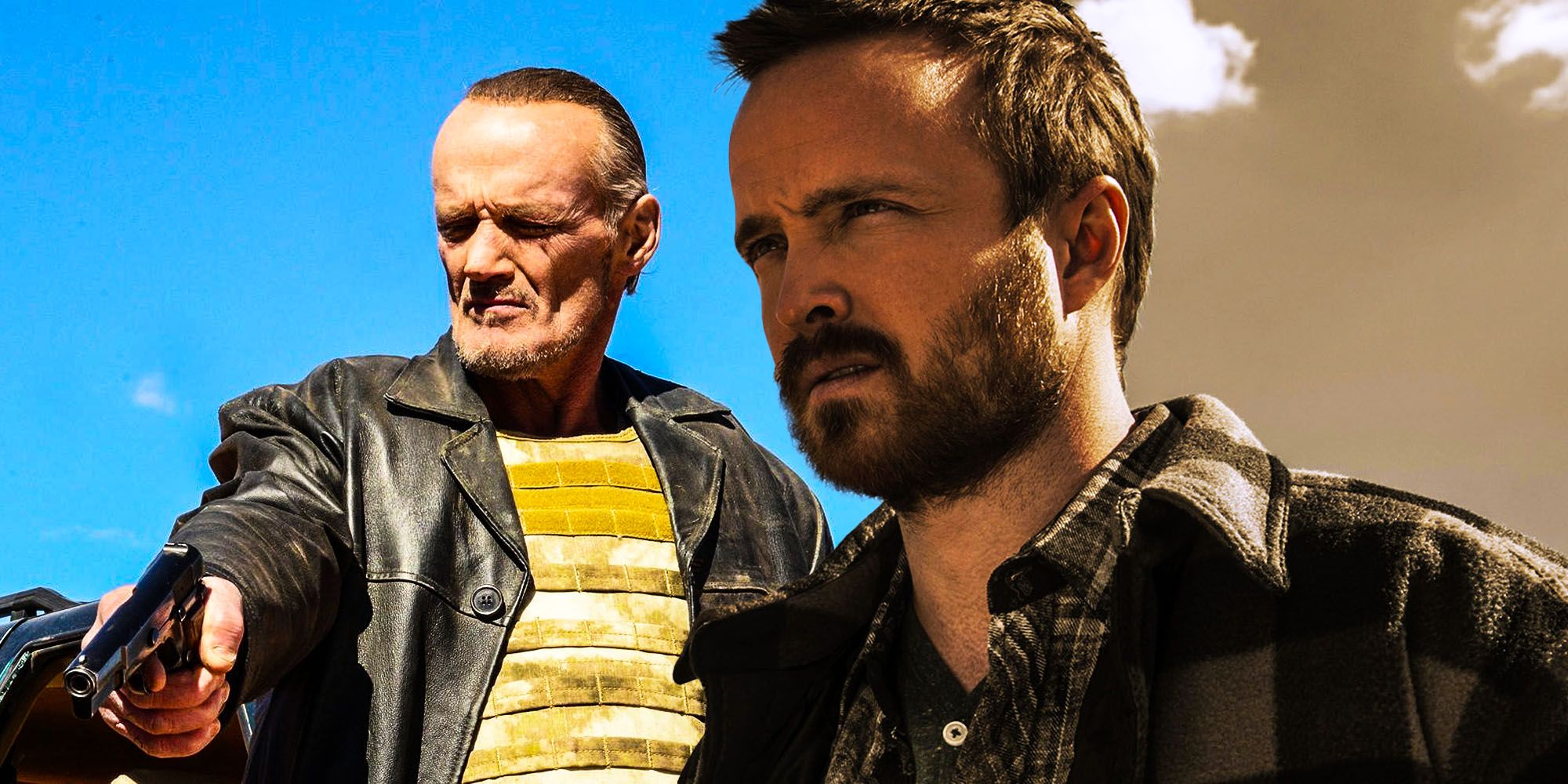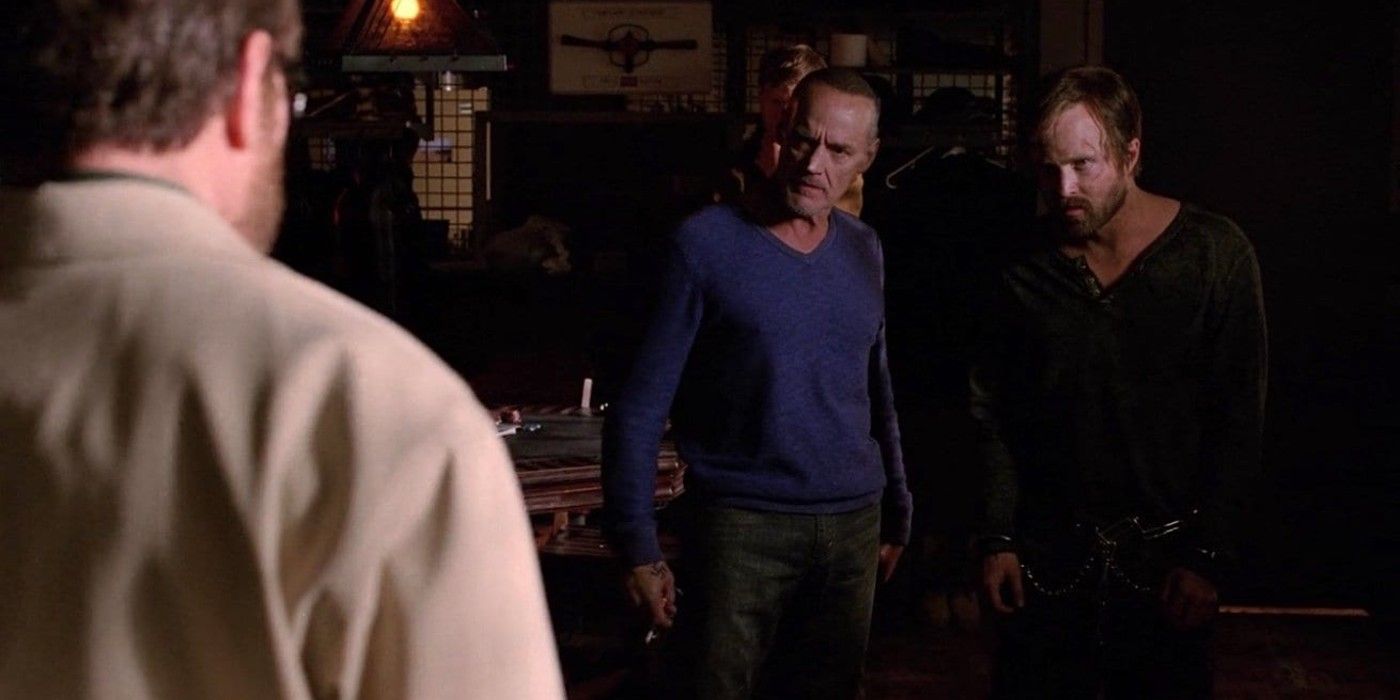Breaking Bad pinned anti-heroes Walter and Jesse against plenty of formidable adversaries, but here's why the final season used a gang of white supremacists as the main villains. In 2008, the AMC crime drama first introduced Walter White (Bryan Cranston) as the desperate and ill high school chemistry teacher whose scientific knowledge lent itself to quickly becoming a top-notch meth cook. After teaming up with his ex-student, Jesse Pinkman, the duo's illicit empire awaited.
But the Walter viewers see in the final season is a far cry from the man he once was; he's slowly morphed into his "Heisenberg" persona. And just as the layered main character grows and changes throughout Breaking Bad's five seasons, the show's villains come and go, as well. And Walt's final foes are much more stand-out choices than Tuco or Gus Fring. They're the likes of Jack Welker (Michael Bowen) and his gang, a group of white supremacists who are no strangers to the underworld of violent crime.
Welker, along with his righthand man, Kenny, and Kenny's nephew, Todd, spearhead a ruthless gang of New Mexico-based neo-Nazis. And their knack for brutality is well-established when they first cut a deal with Walt to use their connections for taking out ten Gus-related targets within multiple prisons. But, although the gang thematically fits in with the show's recurring violence, it's an intriguing departure from adversaries - like Gus - who come across as more organic, believable members of the drug world. They work for the plot, but the inclusion is seemingly odd. However, Welker and his pack of skinheads actually work perfectly for the point in the Breaking Bad series during which they're introduced as Walt's enemies. They show how far the protagonist has fallen and how dark his character has truly become.
As his skill as a crime lord grows and evolves, Walt's humanity, conscience, and overall goodness dwindle. By season 5, he truly is Heisenberg, the "one who knocks." And, thus, the show has to continuously ramp up the villains he's pitted against. It's a fitting choice to have him in conflict with a group of white supremacists, whose bigoted ideologies make their violence and coldness all the more reprehensible to viewers. After all, fans still need to see Walt as "better" than his foes to stay truly invested until the very end. A 2013 article from CinemaBlend raised another solid point about why the Welker gang and Walt are a good match-up in season 5 of Breaking Bad: "Walt has been brought incredibly low at this point, but there's an insult to injury element in his challenge against the neo-Nazis, who are not nearly as smart or interesting as Gus Fring, Hector Salamanca, Gale Boetticher, the Cousins or even Tuco."
This theory certainly tracks in regard to Walt's oversized ego. He's always aware of his own intelligence and cunning nature that becomes increasingly apparent to both him, other characters, and viewers over the course of the show. Remembering how he's literally a man who would rather continually evade law enforcement in lieu of letting someone else take the credit for his drug lord "genius" (i.e. Gale in season 3) makes it clear that duking it out with a pack of far-less-sophisticated skinheads feels beneath him. Not only does the concept of Welker's gang aid in Breaking Bad ramping up towards the series finale and help contrast an increasingly evil Walter White, it takes a shot at his ego regarding the layered, savvy criminal persona he's morphed into.


